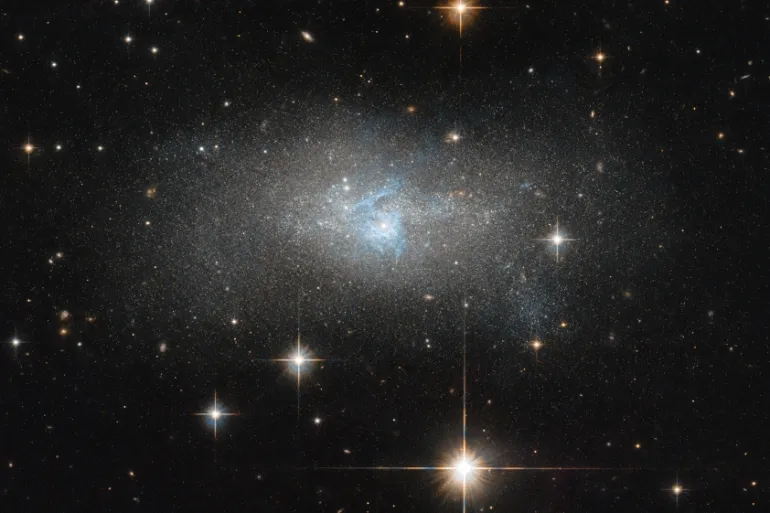An international team of astronomers has discovered the first-ever “bubble of galaxies.” This colossal cosmic structure spans an astounding one billion light-years across and is believed to be a fossilized relic from the period just after the Big Bang.
According to the scientists who unveiled this finding in their recent publication, this gigantic bubble surpasses the Milky Way galaxy’s width by a staggering factor of 10,000.
Team member Cullan Howlett, from The University of Queensland’s School of Mathematics and Physics, commented, “This phenomenal bubble is a relic from the time of the Big Bang, approximately 13 billion years ago, when the universe took shape.” He further explained that they stumbled upon this extraordinary structure while not actively searching for it, as its immense size extended to the very edges of the sky sector they were studying.
What’s particularly astonishing is that this cosmic bubble surpasses the scale of known colossal structures like the Sloan Great Wall and Bootes supercluster, both of which actually constitute this newly discovered bubble.
Milky Way galaxy
Adding to the amazement is the fact that this extraordinary find is located relatively close to our Milky Way galaxy, at approximately 820 million light-years away, within what astronomers refer to as the nearby universe.
(This handout photograph released on September 7, 2023, shows a 3D representation of the galaxy ‘Bubble’, coloured in brown. The image shows the position of the Milky Way, with a small white dot located outside the bubble on the right, in a white cloud [Frederic Durillon and Daniel Pomarede/Animea Studio/CEA/ AFP])
Howlett highlighted that this discovery of bubble of galaxies contributes significantly to our comprehension of the universe’s expansion rate, suggesting that the universe may have expanded beyond initial predictions. He expressed that this could potentially lead to a substantial reevaluation of our current cosmological models.
In essence, this revelation not only unveils a monumental cosmic relic but also holds the potential to trigger a paradigm shift in the field of cosmology, challenging and reshaping our fundamental understanding of the universe.
‘The Great Nothing’
Daniel Pomarede, an astrophysicist at France’s Atomic Energy Commission and a fellow team member, described the bubble of galaxies as “a spherical shell with a heart.”
Inside that heart is the Bootes supercluster of galaxies, which is surrounded by a vast void sometimes called “the Great Nothing”. The shell contains several other galaxy superclusters already known to science, including the massive structure known as the Sloan Great Wall.
Pomarede, a co-author of the research published this week in The Astrophysical Journal, stated that the discovery of the bubble was “part of a very long scientific process.”The discovery also confirms a phenomenon first described in 1970 by Canadian-American cosmologist – and future physics Nobel Prize winner – Jim Peebles.
He theorised that in the primordial universe – then a stew of hot plasma – the churning of gravity and radiation created sound waves called baryon acoustic oscillations (BAOs).
As the sound waves rippled through the plasma, they created bubbles. Approximately 380,000 years after the Big Bang, the process stopped as the universe cooled down, freezing the shape of the bubbles. The bubbles then grew larger as the universe expanded, similar to other fossilised remnants from the time after the Big Bang.
Astronomers previously detected signals of BAOs in 2005 when looking at data from nearby galaxies. But the newly discovered bubble is the first-known single baryon acoustic oscillation, according to the researchers.
The astronomers have called their bubble Ho’oleilana – meaning “sent murmurs of awakening” – taking the name from a Hawaiian creation chant. The name came from the study’s lead author Brent Tully, an astronomer at the University of Hawaii.
